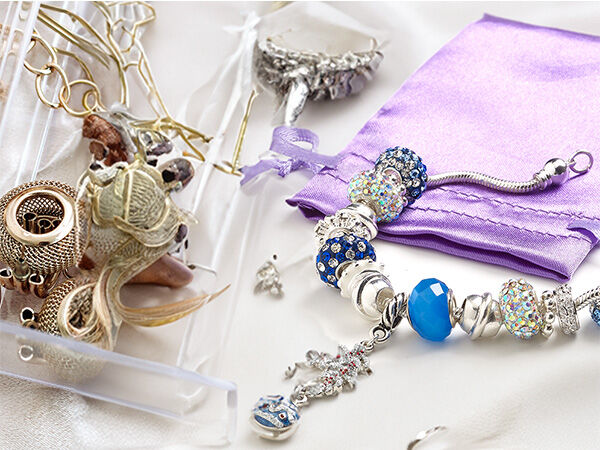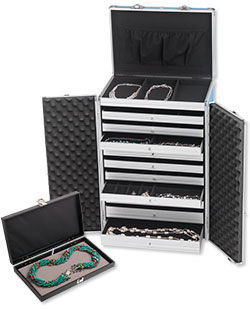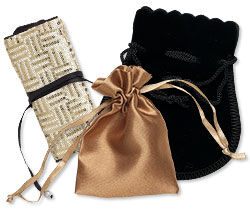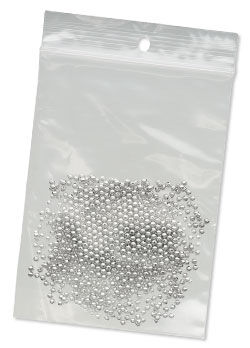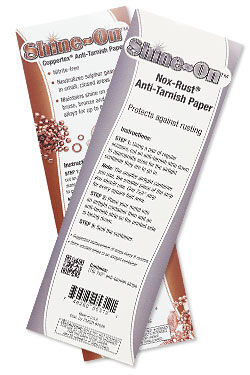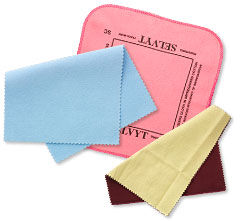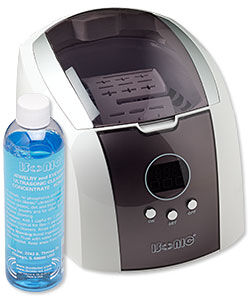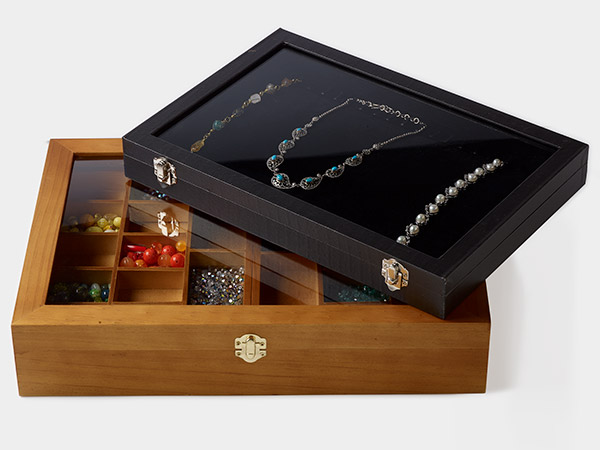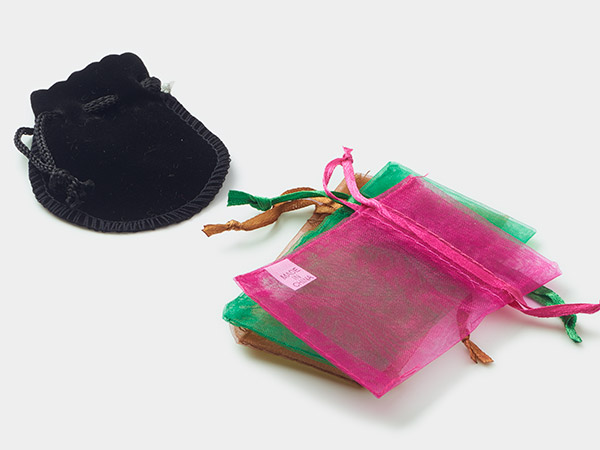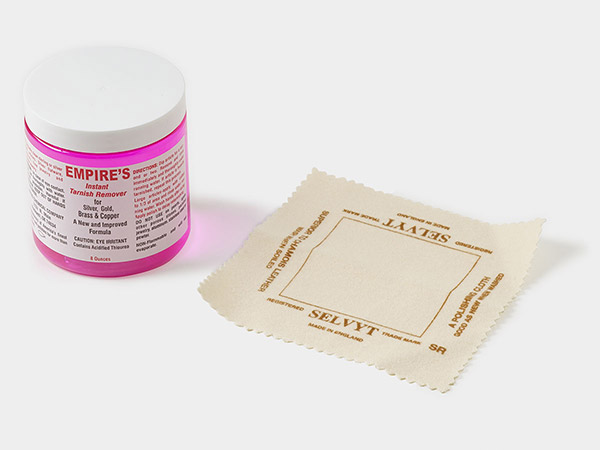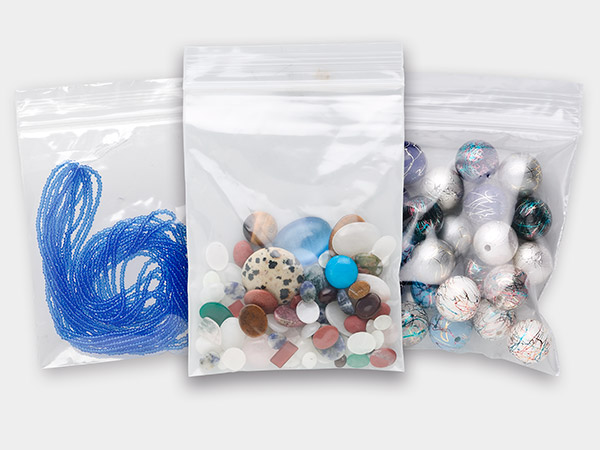Take it Off: All About Jewelry Storage
You come home from a long day at work or running errands, a rockin' party or other social event, and now you just want to take off your jewelry and relax. What should you do with it once it's off your person? Here are some pro tips for keeping your jewelry neatly and safely stored and looking great for the next time you don it.

Patti, a jewelry designer here at Fire Mountain Gems and Beads, shares tips for storing your jewelry. She covers three absolute "DO's" and absolute "DON'Ts" in this video.
Safety First
Jewelry needs to be kept somewhere dry—that includes never storing your jewelry in your bathroom! Usually, a jewelry box or storage containers work, though some people also prefer to hang necklaces from displays. Investing in trays or cases with secure closures is a smart choice, especially if your jewelry is on the expensive side.
Keep It Tidy
Wherever the jewelry ends up, it needs to be tidy. Cases with pull-out drawers make it easy to separate designs and stay organized. When jewelry gets jumbled, you risk tangling the chains and stringing materials. Organization also prevents scratches, cracks and other potential damage to stones, pearls and more. Harder gems should always be kept away from all pearls and gemstones with a lower Mohs hardness, since they will be easily damaged. Aside from all those benefits, putting jewelry back in its place each time means it's easier to find what you're looking for and reduces the chance of losing pieces.
Metal Matters
When you're thinking about where to store your jewelry, it's essential to take the metal type into account. Different metals have unique properties and reactions, and the right storage can help keep your precious pieces looking their best.
Gold
Gold is a malleable metal and can be fairly easily scratched by hard gems. It is recommended to store each piece of gold jewelry in the box it came in or an individual tray. Alternatively, you can opt for a soft pouch that will most likely fit much better in jewelry boxes or other containers.
Silver
Always make sure silver is dry before storing. Silver jewelry should never be stored with pieces that have rubber. Rubber contains sulfur, which can cause tarnish. It's best to store silver in a cloth, container or sealable bag with anti-tarnish strips inside, even if the container itself is "anti-tarnish." Replace strips about every 9 months.
Other Metals
It's best to store each type of metal away by itself. It's also a good idea to include anti-rust or -tarnish strips corresponding to each metal type. Shine-On™ makes Coppertex® anti-tarnish strips specific for copper, brass, bronze or other copper alloys. They also have a line of Nox-Rust® anti-rust strips designed to inhibit rust from forming on ferrous metals such as mild carbon steel, cast iron, tin and tin-plated steel. Putting copper and silver in the same container along with anti-tarnish tools designed to protect silver often means doubly tarnished copper. Anti-tarnish products are usually specific to different metal groups, so separating metals increases the longevity of jewelry and jewelry-making metal components. This reduces your workload to keep it looking good when offering pieces for sale.
Keep It Clean
Now that you know some storage basics, there is a step you'll need to take before actually putting away the designs you were wearing. Gently clean each piece of jewelry after use. This may sound tedious, but the time spent will save you money and heartache by protecting your favorite pieces. Each type of jewelry should be cleaned in a specific way.
A clean, soft cloth is usually enough to remove dirt and sweat. Interestingly enough, the oils from your skin are good for turquoise and cultured pearls, actually helping the polish. Pick the right cloth by referencing "Polishing Cloth Types and Information" and learn how to use them with the "Cleaning Metal and Jewelry with Polishing Cloths" how-to video and instructions. As a note, NEVER use a cloth impregnated with jeweler's rouge to clean plated jewelry or jewelry containing pearls or soft gemstones.
Liquid cleaners, steamers and ultrasonic machines should be used at regular intervals or when pieces start to look dingy. Note: NOT all jewelry can be safely cleaned with these methods. Correctly clean gemstone jewelry by following this "Gemstone Cleaning Chart" that lets you know which methods are safe for which stones.
With a little extra thought and effort, your jewelry will stay safely stored and sparkling clean, ready to dazzle another day.
Shop for Your Materials Here:
Have a question regarding this project? Email Customer Service.
Copyright Permissions
All works of authorship (articles, videos, tutorials and other creative works) are from the Fire Mountain Gems and Beads® Collection, and permission to copy is granted for non-commercial educational purposes only. All other reproduction requires written permission. For more information, please email copyrightpermission@firemtn.com.
